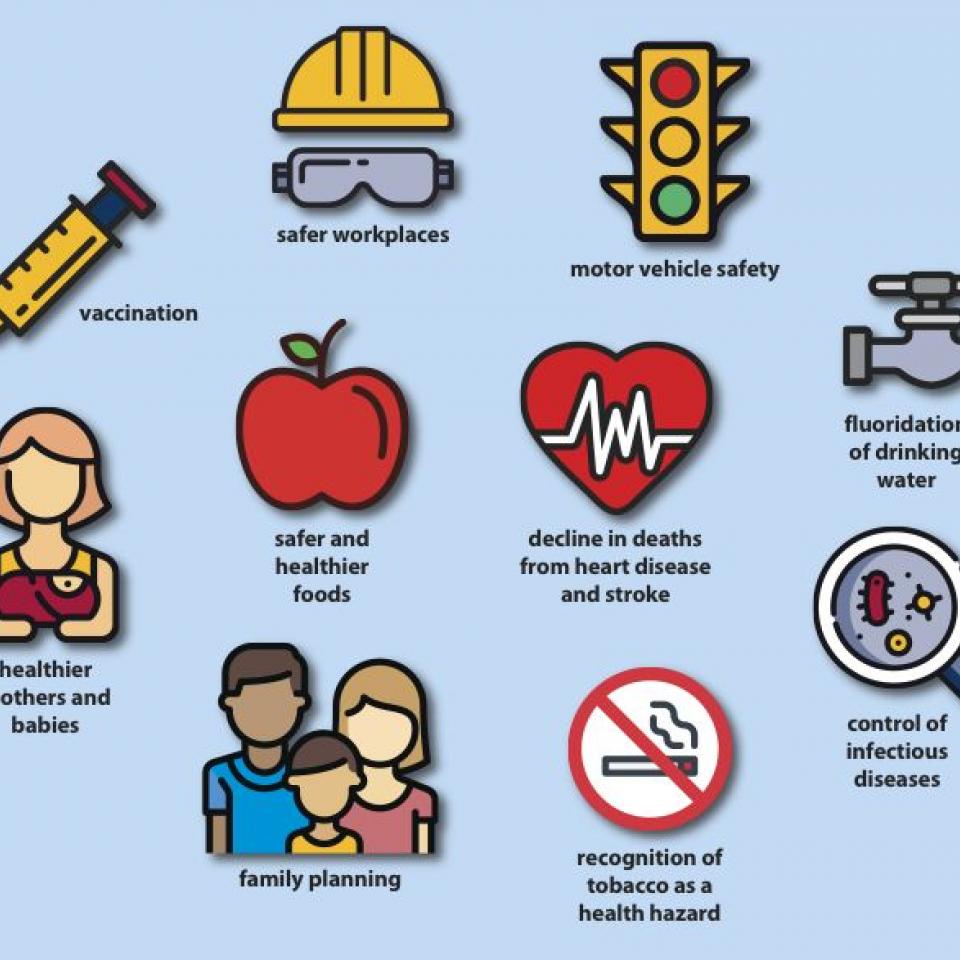Public health describes those actions that keep people healthy by preventing illness, protecting health, and promoting well-being. These actions tend to be a combination of programs, services, policies, and legislation that keep us healthy and prevent illness, injury, and premature death.
Public health actions are intended to benefit populations as a whole rather than just individuals. They are distinct from publicly funded health care, from hospital care, and from treating sick persons. Rather, public health tries to prevent persons from becoming sick in the first place. Public health actions tend to remain in the background, unseen by the public, until an outbreak like Severe Acute Respiratory Syndrome (SARS), or the recent increase in opioid overdose-related deaths.
In Canada, public health actions flow from all levels of government. All provinces have a statutory requirement for provincial governments and local public health agencies to deliver services. These services tend to have four main functions:
Disease prevention, including immunization against common infectious diseases, controlling infectious disease outbreaks, screening for the early detection of cancers, and encouraging healthy behaviours such as seat-belt and helmet use, not smoking, healthy eating, physical exercise, and condom use;
Health protection, including legislation that ensures that our water, air, food, and drugs are safe;
Health promotion that makes our communities more supportive of health initiatives; and
Epidemiology that provides the science and evidence that underpin public health action by describing the health status of populations, identifying causes of disease, and evaluating the effectiveness of public health interventions.
Many public health actions are undertaken by highly trained persons such as medical officers of health (physicians with specialist training in public health and preventive medicine), public health inspectors, and public health nurses, along with many other professional staff required for the complex activities of public health agencies.
Other groups practise public health outside the formal public health system. Examples include the coast guard that prevents the loss of life on our waterways; the fire department that prevents fires; the police, engineers, and transport workers who prevent accidents and injury on our roads; the food producers who ensure that our meals are safe to eat; the family doctors who reduce their patients’ risk of heart disease, and our legislators who draft laws to make our environment clean.
Public health achievements include:
vaccination,
motor vehicle safety,
safer workplaces,
control of infectious diseases,
decline in deaths from heart disease and stroke,
safer and healthier foods,
healthier mothers and babies, family planning,
fluoridation of drinking water
and the recognition of tobacco as a health hazard.
In the past, public health achievements have included vaccination, motor vehicle safety, safer workplaces, control of infectious diseases, a decline in deaths from heart disease and stroke, safer and healthier foods, healthier mothers and babies, family planning, fluoridation of drinking water, and the recognition of tobacco as a health hazard.
It is remarkable that some persons are alive today who were born in the early 1900s and have survived the transition from infectious diseases to chronic diseases as a major cause of sickness and death. Over this period, life expectancy, i.e., the average age at which people will die, has increased in Canada from approximately 50 years to 80 years, a powerful demonstration of the effectiveness of public health in preventing disease and extending life.
Important public health problems remain; many groups in Canada are more likely to experience poorer health and to die earlier than others. The resolution of these inequalities is the challenge of public health in the 21st century.
What is public health?


